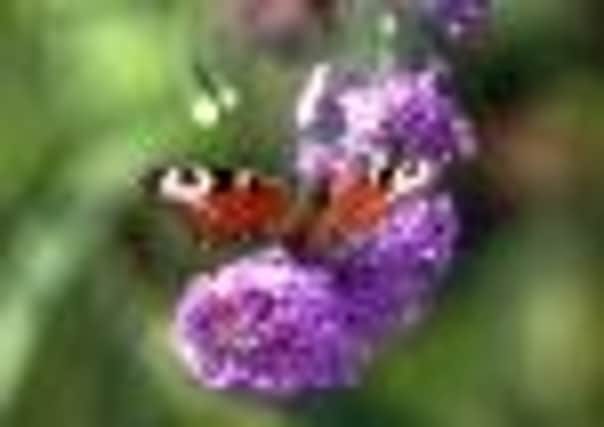Counting on butterflies


Give them an inch and they will take that mile. They spread like wildfire, sprouting form the most peculiar places. That’s because they tolerate even poor soils ; and they love a bit of lime around their roots, so they are quick to colonise where man has been. Derelict factory sites, in the ballast at the sides of railway lines, in cracks in old walls; buddleias will take root and grow. And, boy, do they grow.
That’s one of the problems with what would otherwise be the perfect shrub; a buddleia can put on a dozen feet in a year, which means that unless you, the gardener, keep it in check, it will run riot, and its lovely, fragrant flowers will be perched way up in the air instead of being at head height where humans can most admire them.
Advertisement
Hide AdAdvertisement
Hide AdBuddleia are named after a 17th-century amateur botanist, the Rev Adam Buddle, and most of the plants we grow in this country have their roots in China. Buddleia davidii, the hardy species that is most familiar to gardeners today, was named after a French Jesuit missionary, Pere Armand David.
One reason for buddleia’s popularity is that it’s easy to grow and hard to kill. Buddleia davidii tolerates urban pollution and alkaline soil. It’s generally pest-free, except for spider mite infestations during drought or stress.
It prefers a sunny spot with well-drained soil, but it seems to be able to hang on just about anywhere except where the soil is decidedly acidic.
And its lovely, long blooms act as a magnet to insects and butterflies.
Advertisement
Hide AdAdvertisement
Hide AdWhich is quite appropriate because this year sees a new initiative to help butterflies (as well the return of the Big Butterfly Count – the biggest ever nationwide count of butterflies and day-flying moths, carried out by members of the public to assess the health of our environment).
Butterfly Conservation, in partnership with Marks & Spencer, has just launched the national Planting for Butterflies campaign, to encourage people to plant butterfly-friendly plants.
The top five nectar plants recommended are – no surprise here – Buddleia, Verbena bonariensis, the Perennial Wallflower (Bowles Mauve), Lavender and Marjoram (Oregano).
For more information about butterfly friendly gardening, visit www.butterfly-conservation.org
Do your bit for butterflies by planting these plants this month and enjoy taking part in the count from the July 16-31.